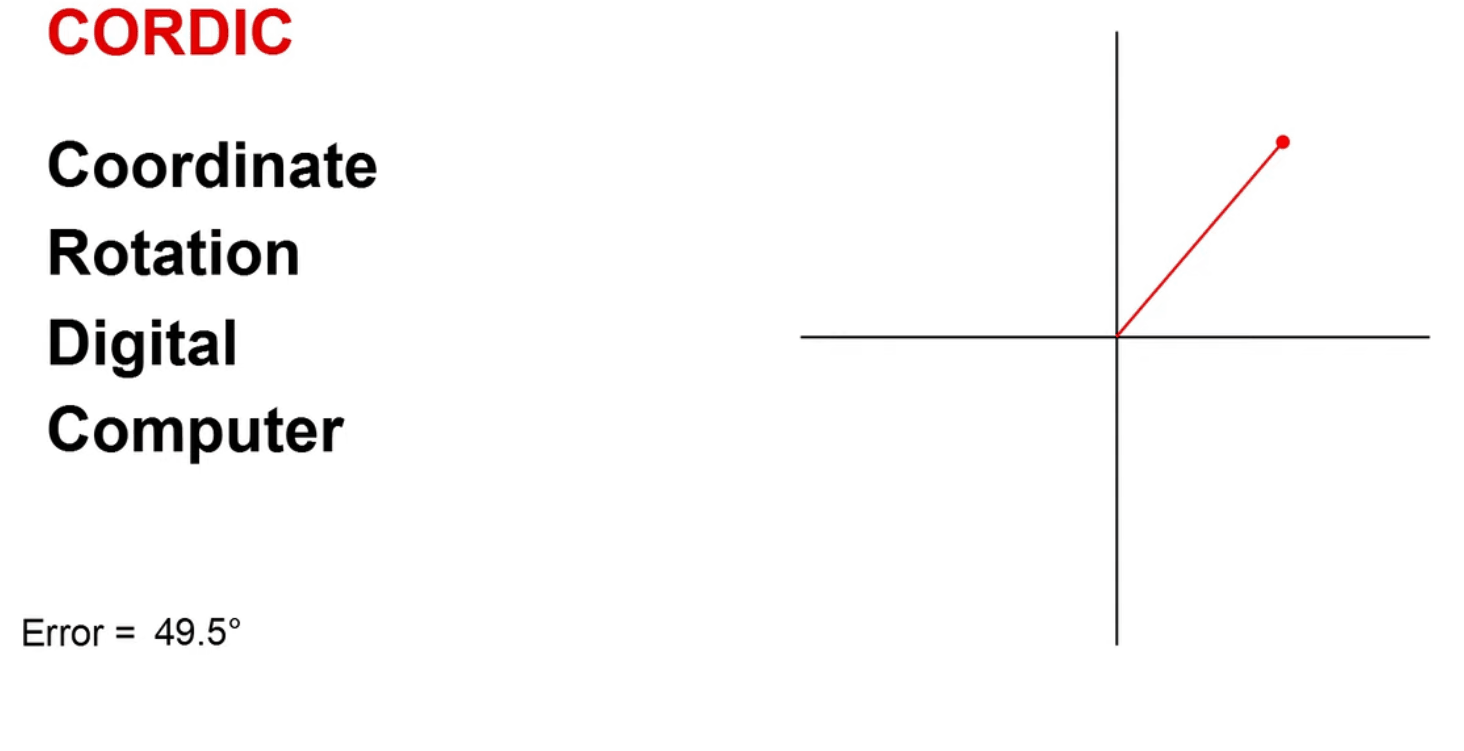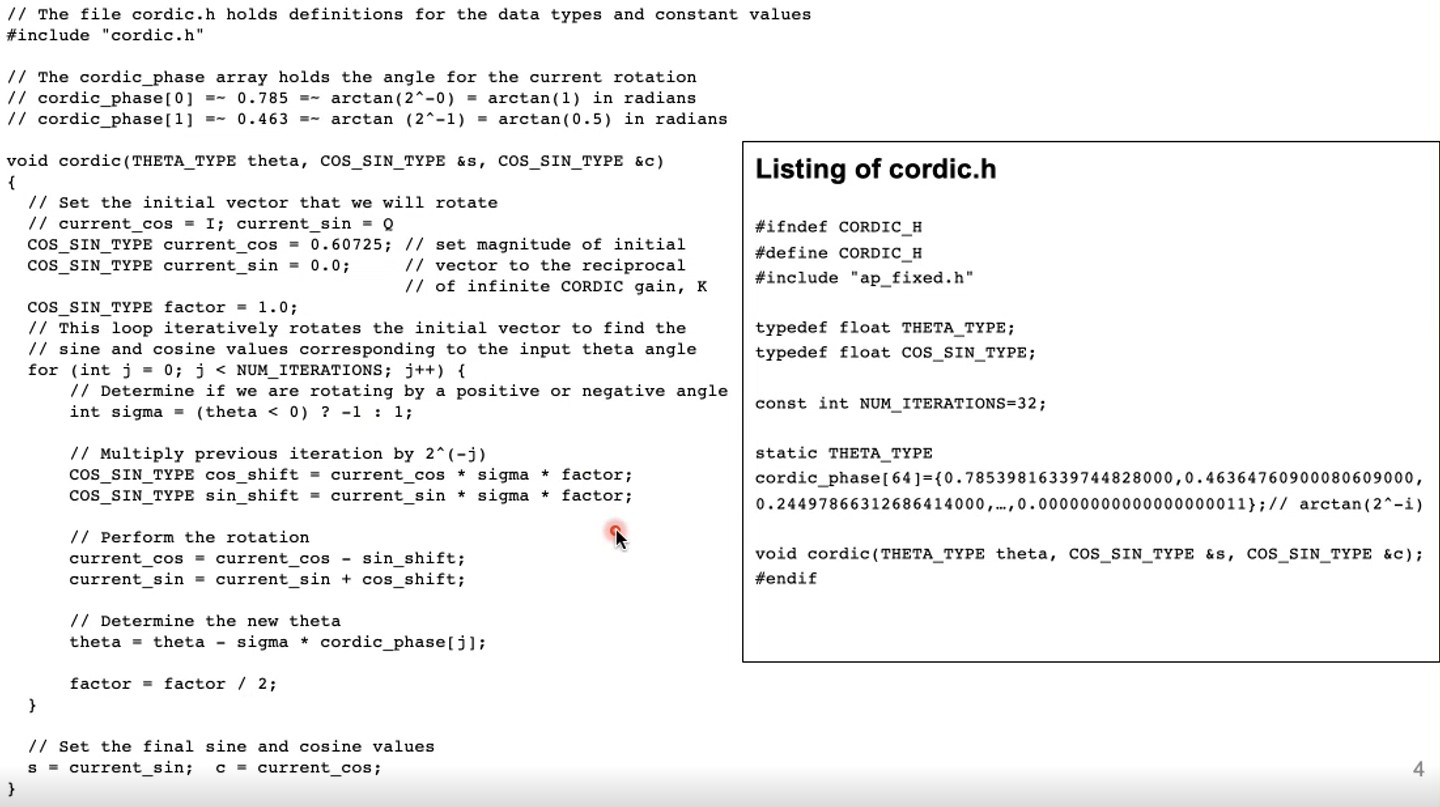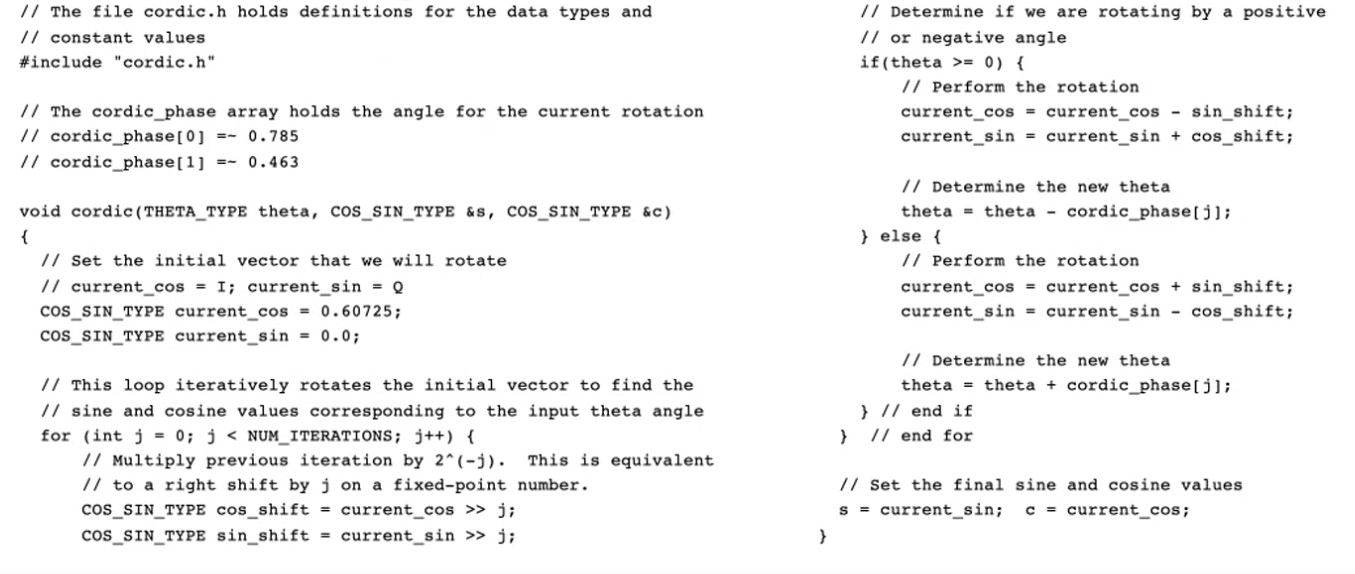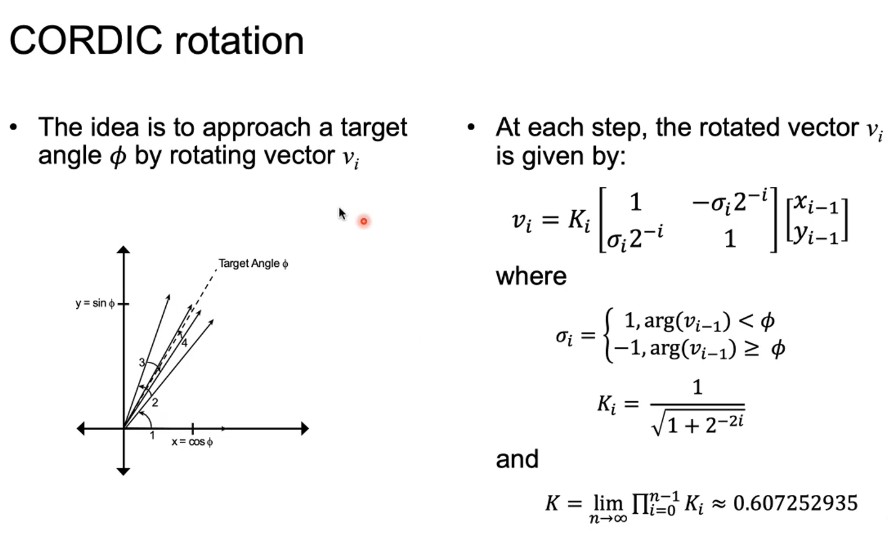CORDIC
Contents
Coordinate Rotation Digital Computer
- Technique to evaluate trigonometric, hyperbolic and other mathematical functions
- Digit-by-digit algorithm that produces one additional digit of precision per iteration
- We can tune the accuracy by modifying the number of iterations (time), or by increasing the number of resources
- Uses only addition, subtraction, bit-shifting and table lookups - hardware efficient

Rotation a vector by an angle can be expressed as a matrix multiplication.
By selecting specific values of 2, we can rely on basic binary operations to rotate the vector
CORDIC revolves around the idea of “rotating” the phase of a complex number, by multiplying it by a succession of constant values. However, the multiples can all be powers of 2, so in binary arithmetic they can be done using just shifts and adds; no actual multiplier is needed.
--> Cordic Phase - angle which we rotated :: arctan(2^-1) ???
Unoptimised CORDIC algorithm
A scaling factor is inadvertently induced, so we need to compensate for it

float values
Floats consume a large number of resources. When targetting FPGAs it is better to use fixed point arithmetic types to represent fractional numbers. The parameters are customised to suit the specific use case.
- Start with
floattype - Then optimise after
ap_fixed<size, int_bits> and ap_ufixed<size, int_bits>
- Also have a rounding mode - floor, ceil, trunc, round
- https://docs.xilinx.com/r/en-US/ug1399-vitis-hls/Arbitrary-Precision-Fixed-Point-Data-Types
Fixed-point and Optimised CORDIC

Optimisations
- Fixed point types
- Multiplications -> Bit Shifts
- Loop iterations
- Unrolling, pipelining, etc
